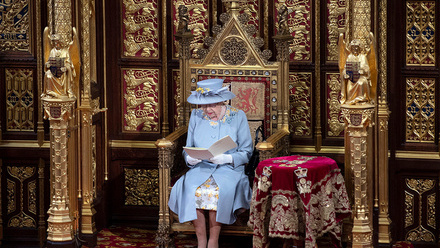Real-Time Structural Damage Identification: The Future with Digital Twins
In the realm of structural engineering and real-time damage identification, a ground-breaking approach is emerging at Newcastle University. This approach leverages the concept of a Digital Twin (DT), a virtual replica of a physical structure, to monitor and predict structural behaviour with unprecedented accuracy. This innovative project aims to revolutionize how structural health is perceived and managed.
Unlocking the Future of Structural Health Monitoring with Digital Twins
Imagine having an exact digital replica of a physical structure, constantly mirroring its real-time behaviour. This is precisely what the project at Newcastle University seeks to achieve. The core objective is to incorporate mathematical formulations into a data-driven approach, creating a DT model capable of reflecting the current state of a structure and identifying damage as it occurs through real-time monitoring.
One of the primary applications of this ground-breaking method is the transformation of small-scale research and demonstration structures in university laboratories into smart structures. By generating DTs of these structures, the system can simulate their real-time behaviour and promptly identify any damage. Nevertheless, the versatility of this approach extends well beyond the laboratory setting. Its inherent scalability allows for seamless application to real-world structures, facilitating the rapid simulation of a structure's current behaviour during real-time monitoring. It excels in detecting even minor damages, making it a valuable tool for assessing the health of structures.
Several key aspects make this method exceptional. Firstly, it constructs a lower-dimensional space using predefined scenarios in the offline phase to expedite computational analysis during the online monitoring, ensuring rapid and precise assessments, even in real-time. Moreover, this constructed lower-dimensional space is further subjected to reduction, enhancing computational efficiency, with controllable accuracy. Before initiating online monitoring, the method takes advantage of the available reduced space. It aims to determine the ideal number and placement of sensors within the physical structure during the offline phase, which precedes the commencement of online monitoring. This optimization serves a dual purpose: it not only decreases the number of required sensors but also mitigates the potential information overload stemming from sensor data.
The project incorporates cutting-edge deep learning algorithms, particularly artificial neural networks. These neural networks are built based on scenarios used for the construction of the reduced space during the offline phase. This approach prevents the need for many experimental trials typically required to construct the network dataset. The artificial neural networks play a crucial role in pinpointing the location of damage as soon as sensor data becomes available during online monitoring, significantly enhancing the accuracy and efficiency of damage identification.
To unite the physical structure with its DT, an Internet of Things (IoT) platform has been established. This platform facilitates seamless communication through various protocols and a cloud server. It forms the vital link between the physical and virtual models, enabling real-time data exchange.
The results of this method are nothing short of promising. It excels in simulating the current behaviour of structures and detecting damage through real-time monitoring with lower amount of information. Its potential to revolutionize structural health monitoring is undeniable.
Implications for Structural Engineering
Let's delve deeper into the profound implications of this innovative approach for the field of structural engineering:
Enhanced Safety: Real-time, precise monitoring enables swift damage detection enhancing safety by enabling timely risk mitigation.
Reduced Maintenance Costs: Predictive maintenance eliminates costly routine inspections and repairs. Instead, targeted interventions are made when damage is detected, resulting in significant cost savings.
Sustainability: With fewer sensors and reduced data processing requirements, this method conserves energy, aligning with environmental sustainability efforts.
Remote Monitoring: Physical proximity is no longer a constraint. Remote monitoring is particularly valuable for large or remote installations, reducing the need for on-site personnel.
Continuous Improvement: Long-term data collection and analysis provide valuable insights into a structure's behaviour, informing design improvements for safer and more resilient construction practices in the future.
Challenges and Future Developments
While the potential of DTs in structural health monitoring is immense, it's essential to acknowledge the challenges and ongoing developments in this field:
Data Security: As data from sensors and DTs are transmitted and stored, robust cybersecurity measures are essential to protect sensitive information from malicious actors.
Integration with Building Codes: The adoption of DTs in construction and engineering will require revisions to building codes and industry standards to accommodate this innovative approach fully.
Further Advancements: The field of Artificial Intelligence (AI) and Machine Learning (ML) is ever-evolving, potentially leading to more precise and efficient methods for damage identification and structural monitoring. Integrating the "Internet of Everything" (IoE) instead of just IoT, which encompasses human interactions and inputs, can enhance the accuracy of the DT model. With human involvement, DTs can not only monitor but also forecast the behaviour of structures in real-time, especially during disasters. This predictive capability holds the potential to save lives by enabling timely evacuations and structural reinforcements, underscoring the transformative impact of DTs on enhancing the safety and resilience of our built environment.
Digital Twins in Structural Health Monitoring: Transforming the Future of Engineering
In conclusion, the project represents a significant leap forward in structural health monitoring using DTs. Its potential applications span from university labs to real-world structures, promising enhanced safety, reduced maintenance costs, and a more sustainable approach to structural engineering. While challenges exist, the benefits are undeniable. The era of the DT has the potential to reshape the future of structural engineering, making our built environment safer, smarter, and more resilient. As research in this field continues to progress, a world emerges where structures of all sizes and types are monitored, protected, and optimized in real-time, ushering in a new era of safety and efficiency in construction and engineering. The era of the DT has arrived, and its implications for structural engineering are nothing short of revolutionary.
Digital Twins updates
Sign-up to receive updates on techUK’s work around supporting the adoption of digital twin technology throughout our economy. You’ll receive regular insights, policy updates, event invitations and projects you can get involved with.
Smart Infrastructure and Systems updates
Sign-up to get the latest updates and opportunities from our Smart Infrastructure and Systems programme.








